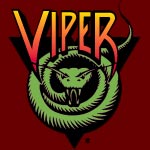Specific Type: Wooden
|
In 1927, Vernan Keenan designed a ride that would alter the fate of roller coasters forever. For in that year, a small seaside park in Brooklyn, NY decided to fill a narrow spit of land with one of the most ferocious coasters ever conceived, the Cyclone. Since then it has been copied and aped many times over, few living up to the name of its predecessor. One which does, actually doesn't even bare the original's name in any form. The fourth attempt by Six Flags Inc. to construct a copy of the Coney Island original, Viper at Six Flags Great America, is viewed by many to be the best adaptation of the famed ride every built, a few fans claiming it to be even better
For the 1995 season, Six Flags Great America debuted their wooden twister as Phase I of what would become the Southwest Territory the following year. 1996 saw a multitude of western theming come into the area as well as three flat rides:Chubasco, River Rocker, and Trail Blazer. 1997 brought the Intamin free-fall tower, Giant Drop to the area and 1999 capped it all off with the brilliant B&M hyper, Raging Bull. And though it has now been overshadowed in stature, the Viper remains a staple of the Southwest Territory as the ride that started it all. Guests can see it even before they enter the park. Standing gruffly against the sky just past theHurricane Harbor water park and beneath the shadow of Raging Bull, lies the Viper, a twisted and coiled pile of wood, waiting to strike. Once through the park gates, future riders take the right fork, crossing under the parks railroad and meander around the classic Schwarzkopf speed racer, Whizzer before finally arriving at the Southwest Territory and entering the queue beside the gateway into Hurricane Harbor. While waiting in line, guests can watch and listen asRaging Bull roars through its hammerhead turnaround high above. But soon the wait is over and its time to select one of 30 seats aboard the forest green PTC 3-bench trains. As this is a mirror image of the original Astroland Cyclone, the trains roll out of the station and then proceed through a gradual left-hand u-turn beneath the stacked track of two of the ride's turnarounds. Then comes the slow climb up the the 100ft high lift that leaves riders on the precipice of an 80 ft drop into mayhem. Down riders plunge, banking few degrees to the left, before pulling out at a top speed of 50 miles an hour and rocketing up through the structure of the ride's final turnaround. The track eases towards horizontal as the train turns around clockwise to face the lift hill. The tracks dive once again beneath the snarl of wood and rise and emerge at the apex of a brilliant floater air hill beside the lift. Back down to ground level the train surges before rising back up into a forceful fan turn to the left. On the way back down, the train's downward momentum pauses momentarily on a flat piece of track only to be ripped off of the double dip, sending riders flying into their lap bars as lift supports fly at their heads. Riders go up and over yet another airtime hill, this one entirely encased within the ride's wooden support structure, then its up and around in another left handed fan turn which hides, stacked beneath the first elevated turn. Up then down as it goes around, the rails line up parallel the the first drop, rising towards the lift. A slight curve to the right and riders dive yet again towards a quick bunny hop leading into another stacked turnaround. Surrounded by wood, the train careens around the counterclockwise u-turn then shimmies and hops its way through the supports directly below the lift, finally emerging into daylight. A short rise up onto a final left-handed u-turn above the pullout of the first drop sends riders into the brake run. |
©1998-2016 COASTER-net.com, All Rights Reserved.


